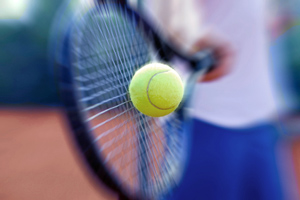If you’ve played sports or maybe even took a first aid class you may be familiar with RICE. RICE was an acronym created for acute injuries, think ankle sprains, broken fingers, or bruises.
R: Rest, I: Ice, C: Compression, E: Elevation. This was thought to be the best way to treat immediate swelling and pain. Then we learned that movement was important which led to RICEM. There have been many other acronyms to help with this, but we’ve learned that the evidence doesn’t necessarily support these.
The problem with RICE/RICEM is that it doesn’t take into account the subacute and chronic stages of healing. RICE was originally created for a severed arm, not the same as a sprained ankle of a high school athlete! RICE could lead to longer-lasting injuries slowing healing by decreasing the body’s natural inflammatory process.
New literature has suggested that we adopt PEACE & LOVE. PEACE focusing on immediate care of an injury, and LOVE being the subsequent management.
PROTECT: unload/reduce activity for 1-3 days following an injury to minimize the further aggravation. Minimize the amount of rest and use pain signals to guide activity.
ELEVATE: elevate the limb higher than your heart to allow for fluid return and minimize swelling
AVOID ANTI-INFLAMMATORIES: anti-inflammatories can decrease long-term healing by slowing the inflammatory process which allows for tissue regeneration. The utilization of ice is also debated because there is no high-quality evidence for the treatment of soft tissue injuries. Some people suggest that even though ice helps with pain, it could be slowing the healing process.
COMPRESS: taping, bandaging or compression sleeves can reduce swelling and improve symptoms.
EDUCATE: health care professionals should educate patients on the benefits of a more active approach rather than a more passive approach. It is important to be fearful of movement after an injury because that can slow your return to activity. We need to facilitate the body’s natural healing process, not be on bed rest.
After a few days, move onto LOVE
LOAD: begin loading the injured area by increasing your activity level. A controlled increase in forces going through those muscles, bones, and ligaments will help with healing. Normal activities should be resumed as soon as symptoms allow. If you’re unsure about progressing your activity, physical therapists can be a helpful tool!
OPTIMISM: the brain plays an important role in healing as well! Fear, depression, and anxiety can hinder healing and delay the return to usual activities. Remember that your body is amazing and has the capabilities to recover from injuries! Recovery is never a straight trajectory and it is important to have a good attitude and patience! Pessimistic patients have been found to have suboptimal outcomes and poorer prognosis.
VASCULARIZATION: physical activity including cardio is important for musculoskeletal injuries. This helps increase blood flow to injured areas and provide early mobilization.
EXERCISE: there is strong evidence supporting exercise for injuries and reducing recurring injury. Exercise helps restore mobility, strength, and proprioception after injury.
Look to your physical therapist for guidance in moving through PEACE & LOVE. It is important you think about long term outcomes and not just immediate damage control.
Reference: https://blogs.bmj.com/bjsm/2019/04/26/soft-tissue-injuries-simply-need-peace-love/
Danielle Taylor PT, DPT



